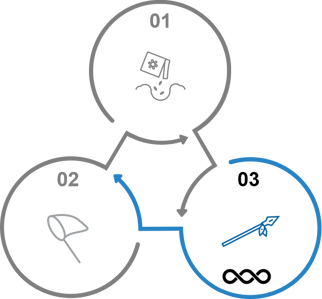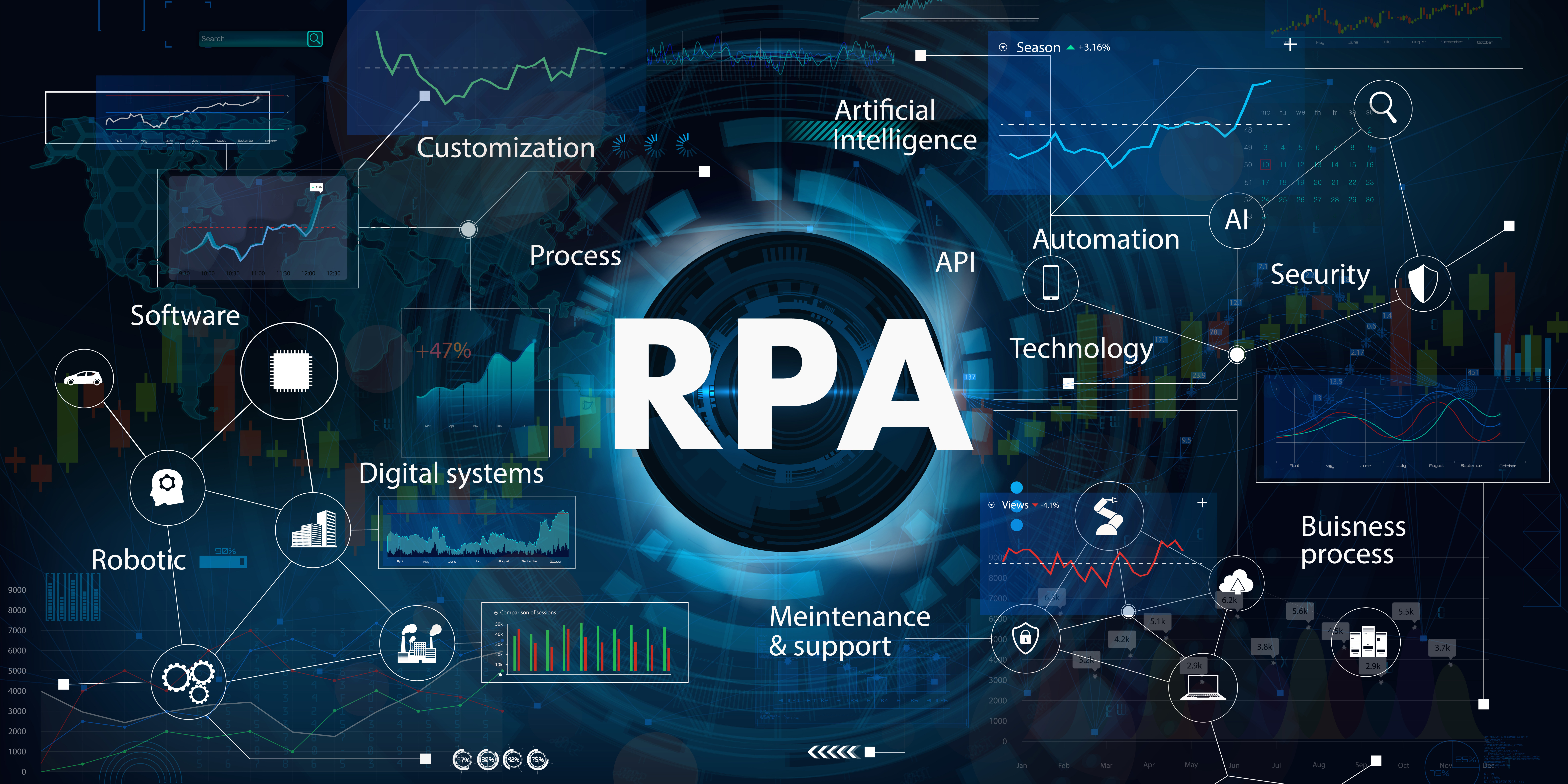How to Choose a Lead Generation & Outbound Prospecting Service Provider
X-Factors to look for when Choosing a 3rd Party Vendor Opening the doors to new business is a critical stage of the sales cycle, particularly within...


Lead Qualification & Complex Enterprise Sales
Will the prospect progress through the sales cycle?
That’s the question that every sales organization needs to answer daily when they evaluate their pipeline.A properly sales-qualified lead will convert to close faster and with better visibility across your sales organization. On the other hand, tracking the progress of an unqualified lead will be impossible to predict and will likely stall out midway through the buyer's journey.
To establish a ‘yes’ to the original question, more will come up:
How quickly will they move towards making a purchasing decision? Do they have a problem that your product or service can solve? If yes, you need to understand the extent to which your prospect's pain points are hurting them to the point where they will get over their buyer’s procrastination, be willing to empty their department’s budgets, and choose your solution/product/service above all your competitors.
If you’re an enterprise solution vendor, implementing your product may potentially change your prospect’s whole organization, which is a decision that comes with severe risks. The task becomes allaying their concerns in this regard and understanding that the ROI outweighs the potential risk. What trigger points can your sales team press to keep the prospect moving happily through the buying journey? Furthermore, enterprise organizations rarely have a single executive who can make sweeping, unilateral decisions that affect their whole company, so gaining enough consensus and influencers within their organization to keep the momentum moving forward becomes critical.
It’s better to tackle these issues at the beginning of the sales funnel or else your prospect will not progress to a closed deal. On the upside, once these questions have been answered, the conversion rate to close increases exponentially. A properly qualified lead will happily move through the buyer’s journey. Alternatively, a poorly qualified lead won’t go anywhere but a dead end. An account executive shouldn’t be wasting their time filtering out (or worse yet, chasing down) dead-end leads, they should be focused on working in the latter half of the sales cycle: negotiation and closing.
In complex B2B enterprise sales cycles, there are multiple stages along the way from discovery call to all involved parties happily signing the contract. Proper qualification is the key to accelerating the process of capturing new enterprise customers and making your sales forecasting more accurate. A prospect becomes a sales-qualified lead once they’ve been properly vetted to move into the next stage of the buying journey. Once you’ve identified the prospect’s needs, goals, and business pain, you can start positioning specifically how your solution, product, or service addresses their priorities.
Who Qualifies Leads?
Sales Development came into vogue in both the start-up circuit as well as in the enterprise world shortly after Predictable Revenue hit the shelves; however, prospecting & lead qualification have existed since the early days of enterprise sales. In modern enterprise sales organizations, the Sales Development Representative (SDR) has the responsibility of qualifying leads, turning prospects into opportunities, and handing these future purchasers over to the Account Executive (AE) for the close. It’s important to keep these roles specialized and focused as prospecting and lead qualification (attracting prospects, cultivating interest, creating urgency) require a different skillset than negotiation and closing.
Complex enterprise sales cycles require the full attention of AE’s to navigate their prospects to the end of the buyers’ journey. The beginning of this journey—the prospecting & qualification phase—falls upon the shoulders of the SDR, who must understand the potential buyer’s goals, priorities & pains, to best position the AE for contract negotiation and purchase.
If you’re interested in better understanding how Infinityn International qualifies leads, discovers business pain, and sparks buying journeys, reach out to us.

Why is it important to qualify your leads?
An unqualified lead will not move through the pipeline, the sales funnel, the buyers’ journey or however else you term guiding your prospect from the initial outreach phase to the closing stage.
A properly sales-qualified lead is a prospect who has shared a problem (or problems) that your product or service can solve, and they’ve expressed interest in working with your organization to help them overcome their obstacles and reach their goals.
Let’s unpack this statement. Everything comes down to purpose, trust, and execution.
Solving the prospect’s problem & pain points is the most important factor. This is the purpose for continued conversations and the reason why they will purchase from you. A properly sales-qualified prospect will have expressed an urgency to solve their problems, which is why they’ve reached out to you.
Secondly, you need to establish a level of trust for your enterprise prospect to reveal the problems affecting their organization, which is also essential for prospects to move through the sales funnel. They need to have confidence, not just in your product and your relationship but also in themselves to make the right decision to work with you. Ideally, your enterprise prospect should understand that you have properly diagnosed their business pain, understand their priorities, and have made the professional assessment that you can solve their problems. The role of the SDR is to cultivate this trust during the initial phase of outreach.
On the other side of the equation, you need to understand the prospect’s level of authority and decision-making power within their organization and their willingness to be an advocate for you internally within their organization. Moving from lead to closed deal requires execution not just from you but also from the prospect and within their company.
How do you qualify leads?
Lead qualification is both art and science.
Every prospect is unique, especially so when you’re trying to sell to large enterprises. Multiple touchpoints are needed and each of them will have a unique perspective on how best to solve their enterprise organizations’ pain points. Forming positive, productive relationships is critical and the SDR must cultivate an atmosphere of mutual trust. The SDR needs to personalize its approach not just to each Ideal Customer Profile or Buyer Persona, but to each prospect individually. Every prospect will not only have varying levels of influence within their organization but different ideas on how to tackle them. In this regard, sales development isn’t just examining your sales funnel conversion metrics, it’s an art form.
Why is it a science? Scientific methodology requires that your process be repeatable for other members of your organization to duplicate it, for your results to be measurable and so you have visibility into what works and what doesn’t. This is especially true when building an outbound prospecting machine. It is critical to have a repeatable sales prospecting methodology if you want to establish a predictable flow of sales-qualified leads, to have better visibility into your pipeline, and to ensure that your sales forecasts are more accurate. Furthermore, ensuring the alignment of your sales organization both within itself and across other divisions like marketing, product development, and customer success requires that each part be organized and consistent. Like all scientific endeavors, your sales methodology will need to be constantly monitored and tested for optimization.
What is Qualification? Qualification Frameworks, in a nutshell
BANT (Budget, Authority, Need, Timeline)
ANUM (Authority, Need, Money, Urgency)
CHAMP (Challenges, Authority, Money, Prioritization)
MEDDIC (Metrics, Economic Buyer, Decision criteria, Decision Process, Identify Pain, and Champion)
These are all some of the most popular qualification frameworks used in the most effective enterprise sales organizations today. While each has its strengths and weaknesses, they all revolve around the same, singular principle: identifying which prospects are worthy of your time and are more likely to move through the buying process.
BANT is the classic qualification framework, originally developed by IBM and the foundation upon which all other frameworks are based. Looking at each component: Budget refers to the amount of money that your prospect can spend on your solution. Depending on your industry, your enterprise solution can cost anywhere between 6 or 7 figures so determining your prospects’ ability to spend at this level is necessary.
If you have a prospect at a large enterprise, do they have the authority to make decisions that will use up their budgets? They’ll need to either be able to influence a wide number of internal stakeholders or they’ll be able to make sweeping executive orders themselves. In any case, to get to the stage where contracts are signed, you have to know that you’re talking to the person who holds the pen.
If they do have decision-making power, there will have to be a strong need to purchase for your prospect to sign the check. Buyers procrastinate often: you need to understand their willingness to act and the stimuli that will lead them to make the necessary moves. The best motivation to buy is solving the business pain that your prospect’s organization is experiencing. However, the prospect themselves must first articulate what this pain is for them to start tackling these challenges.
Enterprise sales cycles can last for months for several buying and non-buying reasons so being able to understand the timeline your prospect has to implement a solution is essential. You need to determine how fast-moving your prospect’s company works to better predict when the deal will close.
There is a multitude of other frameworks out there: ANUM, CHAMP, and MEDDIC are some other popular ones.
ANUM introduces ‘urgency’ into the equation and distinguishes itself from ‘need’ based on willingness to act.
CHAMP determines that ‘challenges’, what problems face the prospect, and ‘prioritization’, how important they think it is to solve these challenges, are the two most important criteria.
MEDDIC adds several other factors like ‘metrics’, ‘decision criteria & process’, and finding an internal ‘champion’. Originally developed by Jack Napoli while he was at PTC, this framework wants you to be to understand not just their business pain but also how their internal buying process works and that you find an internal champion to help advocate for your product.
While each of the other popular frameworks emphasizes different characteristics they’re not all that radically different. They all provide you with guidelines, structure, and a repeatable process that you can utilize, observe, customize, and improve over time.
To summarize, a properly sales-qualified lead will move through the buying journey faster, more predictably, and with less friction. A solid understanding of lead qualification is what distinguishes a true sales development agency like Infinityn International from a mere verifying-contact-details or appointment-setting lead gen company. If you’d like to better understand how we learned this, feel free to reach out to us.

X-Factors to look for when Choosing a 3rd Party Vendor Opening the doors to new business is a critical stage of the sales cycle, particularly within...
One of the most important functions within a productive outbound machine is Sales Development, the process of filling your pipeline with qualified...

The recent pandemic, economic slowdown, and accompanying uncertainty have resulted in a temporary interruption in how enterprises procure technology...
Traditional lead generation methodologies are losing prominence as new approaches revolutionize the world of business process outsourcing (BPO). The...

Helping your future customers advance from RPA initiative to great ROI By Kyle Hansen & Yuriy Koshulap

Growth process outsourcing is BPO for complex sales and marketing processes. Business process outsourcing (BPO) is a familiar term for most in the...

Account-based marketing has been all the rage in the B2B world with big promises, new lingo, new buzzwords. We’ve been finding that it isn’t always...

How does a software-solution supplier win a massive deal against a huge global competitor, who is already in the contracting phase with the buyer? It...

Evolving the SDR Role The business landscape is in constant flux, and with it, the role of the Sales Development Representative (SDR) must evolve. As...

If you’ve clicked on this article, there’s a fair chance you are considering outsourcing your sales, marketing, customer success and overall revenue...